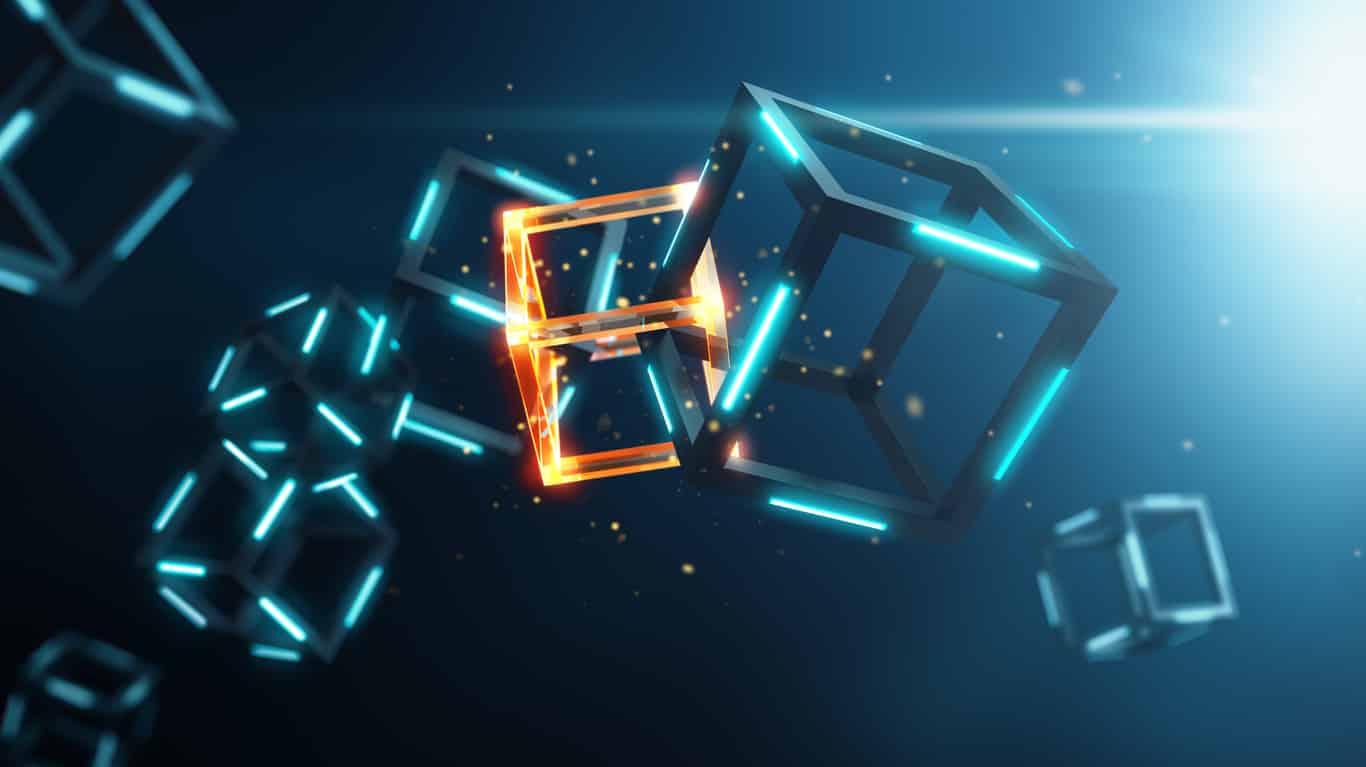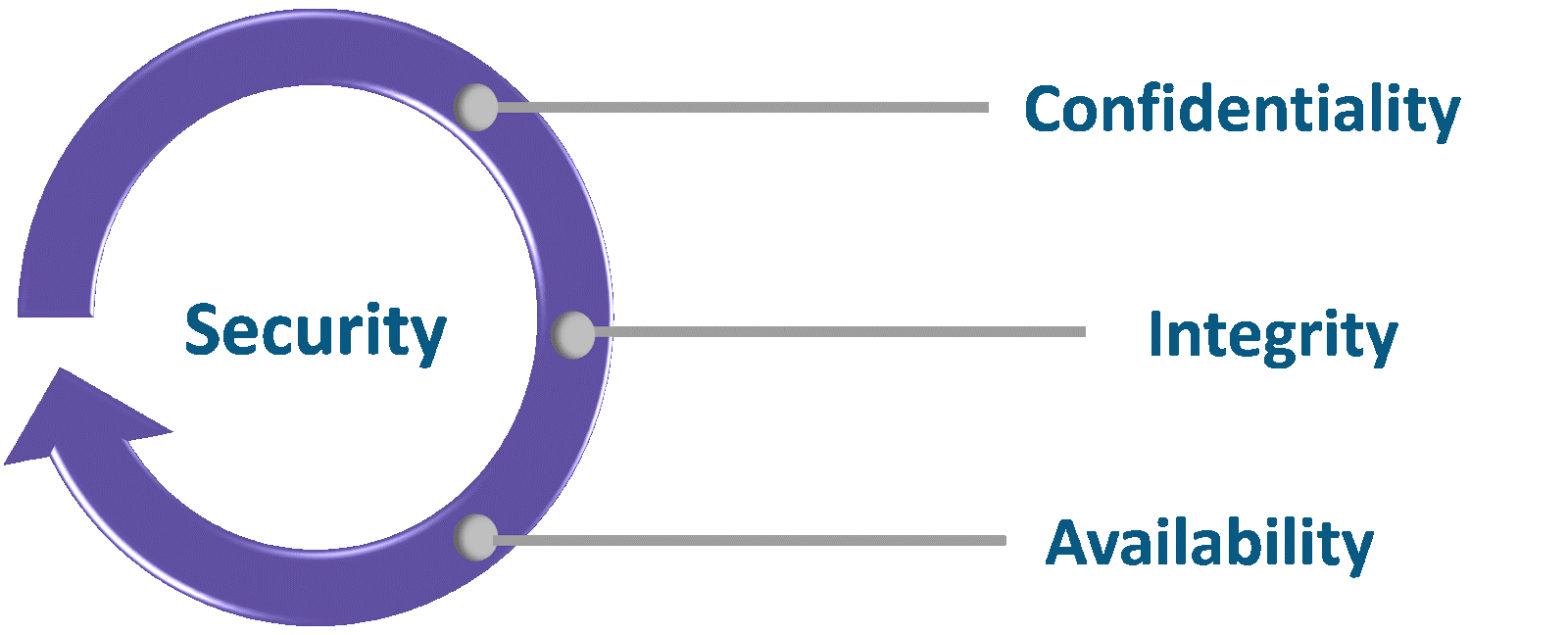- Introduction
- What is blockchain technology?
- History of Blockchain
- Blockchain Architecture
- How does Blockchain work?
- Why is Blockchain Popular?
- Types of Blockchain
- Transaction Process of blockchains
- What's the Difference Between a Private Blockchain and a Public Blockchain?
- How Is Blockchain Used?
- Advantages of Blockchain
- Disadvantages of Blockchain
- Applications of Blockchain
- How to Invest in Blockchain?
- Blockchain Decentralization
- Is Blockchain Secure?
- Bitcoin vs. Blockchain
- Blockchain vs. Banks
- Conclusion
- Blockchain Technology FAQs
Introduction
Blockchain is a shared and immutable ledger that allows us to record transactions and track the assets in a business network. In the inherent design of Blockchain, the data cannot be modified, which makes it very secure for cybersecurity, payments, and other similar industries where data security is more important.
Blockchain is a rapidly growing technology, and it helped us build trust, transparency, security, and the trackability of the data shared among a group of individuals or business networks. It reduces security and data breaches by the application of creating blocks and chaining them together.
In this article, we will discuss blockchain basics and the latest advancements in the technology. We’ll see how it works, the fundamentals behind this technology, its types, and much more.
- Introduction
- What is blockchain technology?
- History of Blockchain
- Blockchain Architecture
- How does Blockchain work?
- Why is Blockchain Popular?
- Types of Blockchain
- Transaction Process of blockchains
- What’s the Difference Between a Private Blockchain and a Public Blockchain?
- How Is Blockchain Used?
- Advantages of Blockchain
- Disadvantages of Blockchain
- Applications of Blockchain
- How to Invest in Blockchain?
- Blockchain Decentralization
- Is Blockchain Secure?
- Bitcoin vs. Blockchain
- Blockchain vs. Banks
- Blockchain Technology FAQs
What is blockchain technology?
There are three valuable concepts under Blockchain: blocks, nodes, and miners.
Blocks: A Block is like a general block, but multiple blocks are used in the chain. Sometimes it is referred to as Distributed Ledger Technology (DLT), which makes modifying any data or digital asset unalterable. Take a look at this DTL Properties.
Let’s take a simple example to understand Blockchain easily. Suppose you are using Google Docs, and whenever you create a document, share it with others. The actual document isn’t copied or transferred. Instead, it is distributed among the people you shared. It is similar to the decentralized distribution chain where everyone can access the document, and the modifications are recorded in real-time.
Therefore, Blockchain is just like a database where the encrypted data blocks are stored and chained together to create a single reliable source for that data. The digital assets in blockchain technology are distributed instead of copying or transferring the document. The shared digital asset is accessible to everyone in real-time, and transparency is also made public. Blockchain technology becomes more reliable and promising as it helps reduce the risk of fraud and data alteration.
History of Blockchain
Blockchain is a new technology, but still, there’s a fascinating history behind it. Let us see some important points from the History of Blockchain.
- In 1991, Blockchain was described by the research scientists W. Scott Stornetta and Stuart Haber.
- In 2004, an enthusiast cryptographic activist Hal Finney introduced the Reusable Proof of Work (RPoW).
- In 2008, Satoshi Nakamoto gave a theory about Distributed blockchains and published “Bitcoin: A Peer to Peer Electronic Cash System.”
- In 2009, Hal Finney and Satoshi Nakamoto successfully done with a Bitcoin (BTC) transaction by computer.
- In 2011, 1 Bitcoin’s value was set to USD 1.
- In 2014, PayPal announced its integration with Bitcoin (Bitcoin crypto is based on Blockchain technology).
Blockchain Architecture
Blockchain architecture is a digital ledger of all cryptocurrency transactions. It is constantly growing as “completed blocks” are added to it. Each block contains a cryptographic hash of the previous block, a timestamp, and transaction data. Bitcoin nodes use the Blockchain to differentiate legitimate Bitcoin transactions from attempts to re-spend coins.
Core components of a blockchain architecture
The core components of a blockchain architecture include a distributed ledger, a consensus mechanism, and a cryptographic algorithm.
- A node is a computer that connects to the blockchain network. Nodes validate and relay transactions and blocks to other nodes. They also maintain a copy of the Blockchain and help to keep the network secure.
- A block is a group of transactions bundled together and added to the Blockchain. Each block contains a cryptographic hash of the previous block, a timestamp, and transaction data. Bitcoin nodes use the Blockchain to differentiate legitimate Bitcoin transactions from attempts to re-spend coins that have already been spent elsewhere.’
- A blockchain transaction is a digital record of an exchange between two parties. The transaction is stored on the Blockchain, a shared ledger of all transactions.
- A chain in blockchain architecture is a digital record of transactions that is composed of blocks. Each block contains a cryptographic hash of the previous block, a timestamp, and transaction data.
- A distributed ledger is a database replicated across a computer network, and this ledger contains a record of all the transactions that have occurred on the Blockchain.
- A consensus mechanism is a process by which the network members agree on the valid state of the ledger. This mechanism ensures that all network members have a standard view of the ledger.
- A cryptographic algorithm is used to secure the transactions on the Blockchain. This algorithm ensures that the information on the Blockchain cannot be tampered.
Some tips on how to create a private blockchain architecture include understanding the business use case for the Blockchain, designing the architecture to support that use case, and selecting the appropriate consensus mechanism and permissions model to ensure the privacy and security of the data on the Blockchain.
Some essential skills that would be required in most cases include strong experience in distributed systems, cryptography, and programming. In addition, a deep understanding of blockchain technology’s underlying principles would be necessary to design and implement an effective architecture.
Some common elements of a private blockchain architecture include a permission ledger, which may be implemented using a distributed ledger platform such as Hyperledger Fabric; a consensus mechanism, which Can use to validate and update the ledger; and a set of smart contracts, which can use to automate transactions on the ledger.
Critical characteristics of blockchain architecture
The key characteristics of blockchain architecture are:
1. Decentralization: There is no central authority controlling the Blockchain, and instead, it is distributed across a network of computers, with each computer or “node” having a copy of the Blockchain.
2. Immutability: Once data has been added to the Blockchain, it cannot be changed or removed. Immutability makes it an ideal platform for storing data that needs to be verifiable and tamper-proof.
3. Transparency: All data stored on the Blockchain is public and transparent. Transparency means that anyone can view the data but cannot alter it without the network’s consensus.
4. Security: Blockchain technology is very secure due to its decentralized nature and cryptography, making it difficult for hackers to tamper with data on the Blockchain.
Database vs. Blockchain Architecture
A traditional database is a centralized system controlled by a single entity, and a blockchain is a decentralized system not controlled by any single entity. Database architecture is a blueprint for how a database is organized, and it includes a description of the database’s tables, fields, relationships, and other elements. Blockchain architecture is a blueprint for how a blockchain is organized, and it includes a description of the blocks, transactions, and other elements in the Blockchain.
How does Blockchain work?
Blockchain collects the data from a group of individuals known as blocks and stores that information in its databases. The blocks that contain the data have a specific capacity to store that information, and when the data is filled in these blocks, closed, and linked with other blocks, it creates a chain of the data known as Blockchain.
Let us see how Blockchain works in step-by-step below:
Blockchain has three components that contribute to the functioning of this technology, and these three components are Blocks, hash, and nodes.
Step-1: Blocks
In this step, the data is stored in blocks where each block contains different data types based on the type of Blockchain. Suppose the data is about a cryptocurrency like Ethereum, then the blocks have the information about the transactions, amount, sender, and receiver. This way, the information it stores is about the type of Blockchain.
Step-2: Hash
Hash works very similarly to the methods used for authentication, such as fingerprints. This hash is also included in the block. A hash is continuously computed on the creation of a block. And if anything is changed within the block, the hash will also change. So, it keeps track of all the changes that are made. But changing any block requires the computation of a complex mathematical problem which is extremely difficult.
When a block is successfully mined, then the change is accepted by the blockchain network. And in return for this, the miner is rewarded financially, just like it works with Bitcoin or other crypto miners.
Step-3: Nodes
Decentralization is a fundamental concept when we talk about Blockchain technology. A computer or an organization cannot own any chain. But it is distributed among the computer and organizations. This way, the Blockchain is neither copied nor transferred to the organization or a system. It is distributed via nodes. The newly mined block is updated, trusted, and verified by the network algorithm.
Why is Blockchain Popular?
Are Blockchains increasing with time? Introducing new functioning of this technology, like smart contracts, makes it more valuable. This technology fascinated many people with its successful operations in cryptocurrency and other industries.
Individuals realize that it is a fundamental concept and should also be applied in other sectors such as tax calculation, e-notary, medical records, etc.
Blockchains make transactions easier and don’t include the involvement of third parties.
As we all know, cryptocurrencies are nothing but digital currencies. It is also true that cryptocurrencies are operated on Blockchain technology as it protects them by applying complex encryption. Blockchain makes the transactions of cryptocurrencies more secure, which is why Blockchain is more prevalent in the crypto-verse. However, it will be used in other sectors sooner or later due to its solid security and encryption of the data.
It is also popular because there are many things that Blockchain does like it allows the verification of authenticated users without being dependent on third parties.
Types of Blockchain
Blockchains are of four types that are as follows:
Public: A public blockchain is a decentralized, distributed ledger that allows anyone to view and add records. Because public blockchains are open, transparent, and immutable, they can revolutionize how we interact with the digital world. For example, public blockchains could create a decentralized internet, where users control their data, and Bitcoin and Ethereum are examples of public blockchains.
Private: A private blockchain is a ledger only accessible to specific users. Businesses often use this type of Blockchain to keep track of internal transactions. A private blockchain is where read and write permissions are kept centralized in one organization. A private blockchain is permissioned, meaning specific nodes can join the network and validate transactions. For a private blockchain, a centralized authority usually dictates who is allowed to join the network.
Consortium: A consortium blockchain is a public and private blockchain hybrid. It is a decentralized ledger that is accessible to a group of users. Unlike a public blockchain, a consortium blockchain has a restricted group of users who can access the network and participate in the consensus process. Banks and other financial institutions often use this type of Blockchain.
Hybrid: A hybrid blockchain is a type of Blockchain that combines features of both public and private blockchains. A hybrid blockchain is a public blockchain with some features of a private blockchain.
What are Permissioned and permissionless blockchains?
Permissioned blockchains are where the validators (i.e., the nodes) are known and trusted. Only do operations, which means that the validators enforce the Blockchain rules rather than the network’s consensus.
Permissioned blockchains are often used in enterprise settings where there is a need for a high degree of trust and security. For example, a permissioned blockchain could manage health care records or track a product’s supply chain.
A permissionless blockchain is a type of Blockchain where anyone can join the network and participate in the consensus process. No central authority controls who can join the network or what transactions can be included in the Blockchain.
Transaction Process of blockchains
There are various ways that a transaction is processed in Blockchains. Here we’ll look at how the authentication is done using cryptographic keys and the authorization of crypto by proof of work.
1. Authentication: The Blockchain was not operated by any central authorities. As we already discussed, it is a decentralized technology. But the transactions done within this technology are still authenticated using cryptographic keys. A cryptographic key is nothing but a string of data that works like a password. Each user has different public and private keys to use, and these keys are used for authentication purposes.
2. Authorisation: When the transaction is allowed between different users, it should be approved by the authorization. For public blockchains, authorization must be done before any block is added to the chain.
3. Proof of Work: Proof of work is required to add a block to the chain. To do that, the owner of the computers in that network needs to solve a complex mathematical problem. The process of solving a complex mathematical problem is known as mining.
4. Mining Power: The power consumption for mining is very high. According to the Cambridge Bitcoin Electricity Consumption Index, bitcoin mining consumes around 70TWh of electricity in a very high year. Therefore, the transaction process of bitcoin or any other crypto will consume more power for mining.
5. Proof of Stake: Blockchain also added one more protocol for validation of the stakeholders of the block, known as Proof of Stake. These protocols validate that the participants must have a stake in the Blockchain.
Check out this blockchain basics and blockchain process.
What’s the Difference Between a Private Blockchain and a Public Blockchain?
In this section, we will see some differences between Public and Private Blockchain, which are as follows:
Public Blockchain Private Blockchain
1. Anyone can access these blockchains. It is also possible to read, write, and update the data in the Blockchain.
1. In a private blockchain, the read, write, or update can be upon invitation.
2. The network actors do not know each other in this Blockchain.
3. Public blockchains are decentralized.
Private blockchains are centralized.
4. It takes more time to complete transactions per second.
5. Bitcoin, Ethereum, Litecoin, and other public cryptocurrencies are an example of Public Blockchain.
5. EWF, B3i, and R3 are some examples of Private Blockchain.
How Is Blockchain Used?
Blockchain technology is used in various industries such as supply chains, retail, financial services, healthcare, and others.
Here are some simple use cases of Blockchain technology:
1. Cryptocurrencies: Blockchain became famous when applied IT to cryptocurrencies. Crypto allows you to transfer values faster across the network and doesn’t interfere with any centralized banks.
2. Decentralized Banking: Blockchain helps the banking system grow more rapidly than traditional methods. Many banks are interested in applying Blockchain in their banking systems, including Canadian Imperial Bank, UBS, and Barclays.
3. Optimizing healthcare operations: Blockchain increases the speed of health insurance payments to patients, strengthening the healthcare sector. In addition, it also stores medical data and records in its databases more securely.
4. NFT marketplaces: NFT stands for Non Fungible Tokens, digital tokens of things like clothing and paintings. Blockchain allows you to buy these tokens from NFT marketplaces.
5. Automating advertising campaigns: Nowadays, marketing or advertising campaigns are getting brighter than traditional campaigns. E.g., the targeted advertisements are shown to the customers based on their interests and recent activities. Automating advertising campaigns is also done by blockchain technology.
Advantages of Blockchain
There are various advantages of Blockchain that includes the following:
1. Decentralized: Unlike traditional currency run by central banks, Blockchain is a decentralized technology which means centralized banks or any other authority doesn’t run it. Or we can also say that no single entity maintains the network.
2. Immutable: Blockchain is immutable, which means it cannot be changed or altered. The system should be capable of solving a complex mathematical problem, which is verified after the problem is solved.
3. Transparency: Public blockchains are available to all, and anyone can access this Blockchain. It is also possible to view the transactions and their source code. But only the transactions that are done in public blockchains can be viewed. It also allows you to build new applications or any improvements that should incorporate into the Blockchain.
4. Trustworthy: The Blockchain automates the transactions only when certain conditions are met, including the authentication between both parties. Trustworthiness makes the transaction more reliable between two parties who do not know each other.
5. Universal Banking: Although Blockchain is a new technology, it is still adopted globally, and people who do not have bank accounts can also use Blockchain to store money. Blockchain is a great way to use banking features without having a bank account. The other reason for using Blockchain as universal banking is that it protects against theft which is likely to happen when you have cash in your pockets or wallets.
Disadvantages of Blockchain
Having various advantages doesn’t mean that Blockchain is only beneficial. Here we’ll see some of the disadvantages of Blockchain below:
1. Impact on Environment: As we all know, for adding a new block in the chain, the computers in the network need to solve the complex mathematical problem that consumes a lot of electricity. This consumption of electricity is very high, that in turn impacts our environment.
2. Scalability: Blockchain’s weakness is that it is not indestructible, which means it can be destructed due to its scalability. The decentralization of Blockchain comes at the cost of scalability. So, if you are trying to grow the blockchain networks, you’ll need to increase the speed and efficiency, which is very hard.
3. Overconsumption of Energy: Verifying that transaction requires a lot of energy whenever a new block is added. According to research, the Bitcoin transaction involved the consumption of 70TWh of electricity per year.
4. Storage: Whenever we make transactions on the network, all the information is stored in the blockchain databases. But more storage will be required for an increased number of transactions, which becomes a challenge in this technology.
5. Time-Consuming: The computation of the complex problem requires more time. As mathematical problems are so complex, high-end systems are needed to solve these problems. So, if the system’s performance is not high, it will consume a lot of time solving those complex problems.
Applications of Blockchain
There are several potential applications of blockchain technology. Some of the most promising applications include:
1. Supply chain management: Blockchain could potentially be used to streamline supply chain management and logistics. By tracking the movement of goods and materials through a blockchain-based system, businesses could gain greater visibility into their supply chains and identify inefficiencies and bottlenecks.
2. Identity management: Blockchain could be used to create a digital identity for individuals, businesses, and other entities. Identity management could potentially help to reduce fraud and increase security.
3. Data management: Blockchain could store and manage data more securely and efficiently. For example, healthcare providers could use Blockchain to store and share patient health records securely.
4. Voting: Blockchain could be used to create a secure, tamper-proof electronic voting system, potentially increasing transparency and voter turnout.
5. Financial services: Blockchain could streamline financial transactions and reduce costs. For example, banks could use Blockchain to process payments more quickly and securely.
6. NFT Marketplaces: A blockchain is a distributed database that allows for secure, transparent, and tamper-proof record-keeping. In an NFT marketplace, Blockchain can track ownership of digital assets and ensure that transactions are secure and transparent. Additionally, Blockchain can help verify the authenticity of NFTs, which is essential in ensuring that collectors can purchase genuine assets.
7. Real Estate: The Blockchain is a distributed database that can use to store information about real estate transactions. When a transaction is recorded on the Blockchain, it is visible to all parties involved. This transparency can help to reduce fraud and increase confidence in the real estate market.
8. Insurance: Blockchain can help insurance companies to become more efficient and effective in several ways, including:
- Reducing the time it takes to process claims and payments
- Enhancing data security and privacy
- Eliminating fraud
- Improving customer experience
9. Government Benefits: Blockchain in government benefits allows for a secure and transparent way to distribute benefits to citizens. Government benefits can help to reduce fraud and corruption and ensure that benefits are received by those who need them the most. Additionally, Blockchain can help to streamline the process of distributing benefits, making it more efficient and cost-effective.
10. Real-time IoT operating systems: Blockchain technology can be used to create a decentralized, real-time IoT operating system, allowing data to be collected and stored on a secure, decentralized network. Authorized users in real-time could then access the data, creating a more efficient and secure IoT operating system.
How to Invest in Blockchain?
There are several ways you can invest your money in Blockchain directly. And you also don’t need an exchange-traded fund (ETF) to invest your money.
You can invest your money in Blockchain in the following ways:
1. Buying Shares: You can use Blockchain to buy shares through brokers such as Betterment and Vanguard.
2. Cryptocurrencies: There are various cryptocurrencies based on blockchain technology, and you can buy cryptocurrencies like Bitcoin or Ethereum directly.
3. By investing in Crypto mining companies: Various mining companies offer investors to participate directly in the companies’ equity. These companies include Riot, Marathon, Hive, etc.
4. Mining Pools: This is an alternative to the investment in mining cryptocurrency by yourself. You can join mining pools and may get some chances to mine blocks of cryptocurrencies.
Blockchain Decentralization
In the distributed network, blockchain decentralization refers to the decision-making from a centralized entity such as an organization, individual, or group of individuals. It also allows the transfer of control. The primary function of decentralization is to reduce the level of trust and responsibility on a central entity. It also allows the distribution of equal power and control to all participants in the network.
Blockchain is a decentralized peer-to-peer network where the efficiency of working with unknown parties increases without even knowing each other. It gives the network transparency and immutability, enabling it to keep every record.
Also, blockchain decentralization is carried out on the architecture level where infrastructure failure is not encountered. However, each node on the network contains a copy of the information to make it easy to exchange information among different nodes, making it easy for blocks to be added to the chain.
Is Blockchain Secure?
To understand the security of Blockchain, let us take a scenario.
So, when you mine for a block in the network, there are several blocks, and if you get a block mined.
Then it will ask you to solve a complex mathematical problem that needs your system to be powerful. It also consumes a lot of energy while solving the problem. So, this way, you solve the complex problem to get the block to add to your chain. The block will add, or store holds a unique hash number that connects it with the previous block in the chain.
So, each block has a unique hash number that cannot be changed or altered. This way, the security of Blockchain comes into view. And you can now see how secure Blockchain is as it requires solving a complex mathematical problem and assigning the unique hash code to each block for authentication purposes, and can operate bitcoin for adding that block to the chain.
Bitcoin vs. Blockchain
As we all know about Cryptocurrency, Bitcoin, and the technology Blockchain. Let us see some points for Bitcoin vs. Blockchain below:
- Blockchain is a technology that supports the cryptocurrency Bitcoin, whereas Bitcoin is a version of a blockchain distributed ledger system.
- There’s transparency in Blockchain, whereas it can o anonymous.
- Blockchain is used to transfer proprietary information and digital assets, while bitcoin is only used to transfer digital currencies.
- Bitcoin is restricted only to exchanging cryptocurrency; on the other hand, Blockchain has a variety of uses.
- Blockchain is a distributed database, while Bitcoin is a cryptocurrency.
- The scope of bitcoin is limited, but Blockchain is open and changes from time to time.
Blockchain vs. Banks
In this section, we will see how Blockchain differs from banks.
- Blockchain technology offers a secure and reliable way to send payments without any interference from a third party, which defeats the traditional banking system for sending payments.
- Based on a poll by European Payments Council, 90% of the members agreed that Blockchain technology would change the payment industry in upcoming years.
- R3 and Ripple work with banks for the traditional payment system resulting in increased sector efficiency.
- Blockchain results from the solution to complex mathematical problems, whereas a bank is a ledger that keeps the statement of existing currency and the transactions.
- The banking system is run by centralized banks, whereas Blockchain doesn’t have control of any authority and therefore is a decentralized technology.
Conclusion
Blockchain is a rapidly growing technology with enhancements in its development. It enabled new developments such as smart contracts which are extremely useful for automating some processes.
Companies have also started implementing this technology in various fields such as tax calculation, the healthcare sector to keep medical records, e-notary fields, etc. Blockchain makes it easy for these platforms to make transactions and keep the records of these transactions more secure in the databases. It also reduces the involvement of third parties while doing these transactions.
As we know, cryptocurrencies are prevalent nowadays and are digital currencies operated on blockchain technology. Cryptocurrencies became more secure and reliable due to the implementation of blockchain technology in it.
We discussed how blockchain technology works, and the features, demerits, and various comparisons are also carried out in this article. In conclusion, we can say that blockchain technology is one of the fastest-growing fields, and if you are looking to make a career in this field, then this can be a better option. Check out this free blockchain course to get started with the basics of Blockchain.
Blockchain Technology FAQs
What is a blockchain technology example?
The famous examples of the implementation of blockchain technology are Bitcoin and Ethereum, where anyone can connect with Blockchain for the transaction of bitcoins and ether. The other example of Blockchain is that it provides a secure way to transfer and receive payments internationally without building any trust between parties
What are the 4 different types of blockchain technology?
The 4 types of blockchain technology are
1. A public blockchain accessible to anyone, for example, Bitcoin, Litecoin, Ethereum, etc.
2. A private blockchain is a restrictive blockchain operated only in a closed network. For example, Multichain, Hyperledger blockchains, etc.
3. Hybrid blockchains are a combination of public and private blockchains—for example, Dragonchain.
4. Consortium blockchain is a semi-decentralized blockchain, meaning some of its networks are managed by a centralized organization, and the remaining part is run by decentralized banking.
What is the primary purpose of Blockchain?
The main goal of Blockchain is to allow the details of the digital transaction to be recorded and distributed. It also restricts data alteration, creating a foundation for immutable ledgers where digital data cannot be altered or deleted.
Why is blockchain technology suitable?
Blockchain technology is good for building trust among unknown parties from two locations to make payments. It is also better for providing transparency and traceability of the data shared across the business network.
What is the most prominent blockchain company? Several large blockchain companies include Chainalysis, Kraken, Uniswap, OpenSea, etc. Out of these, DocuSign is the most prominent blockchain company that uses the Ethereum blockchain to record its customer agreements and other information about transactions. It helped to create the prototype of a publicly accessible blockchain-based smart contract in 2015.
Is Blockchain the future?
There’s no doubt that Blockchain can be the future. Blockchain will create an uncensorable repository of data and information which is reliable and trustworthy. The future of Blockchain is the main characteristic of Blockchain that may lead to its implementation in various fields. Hence, the Blockchain is the future of the Internet, and many organizations, sooner or later, are looking to adopt this technology in their operations.
What will replace the Blockchain? Some alternatives might replace Blockchain in the future that includes:
Centralized databases
Distributed databases
Cloud storage
Ledger technologies
and Centralized ledgers.
Who invented Blockchain?
Satoshi Nakamoto invented Blockchain in 2009. But it is still unknown whether Satoshi Nakamoto was an individual or a group of individuals.
Is Blockchain the next Internet?
It also encourages the reliability of data and the source by increasing transparency in transactions and verification. Blockchain creates the repository of data uncensored by any centralized bank or government. One of the main reasons that may lead Blockchain into the next Internet.






